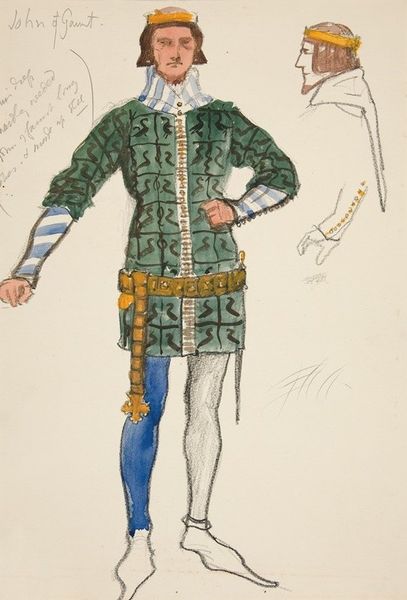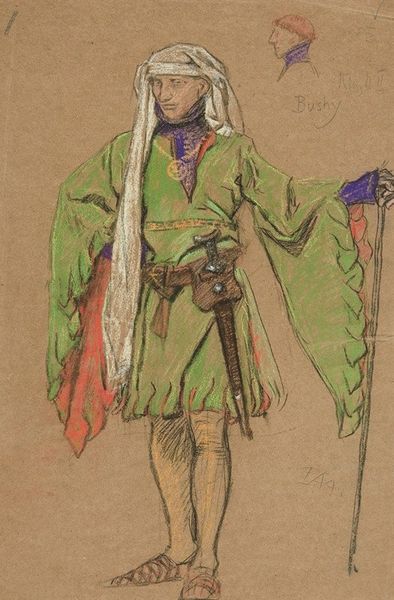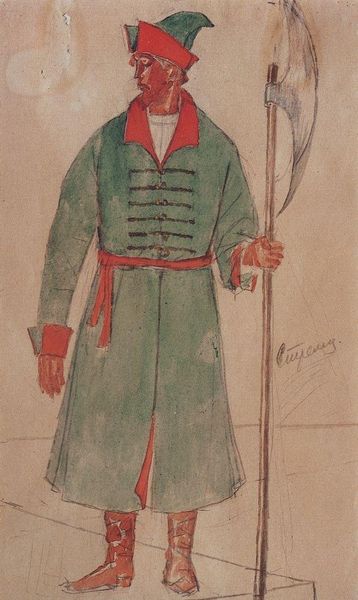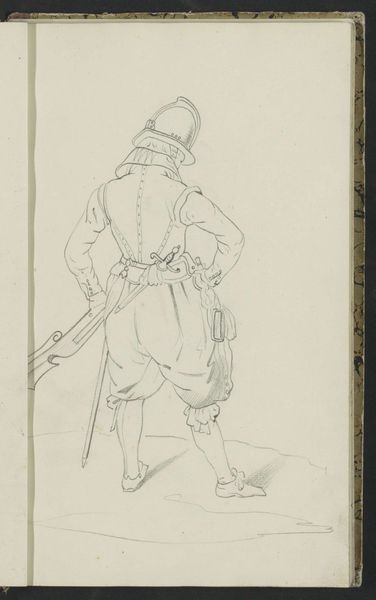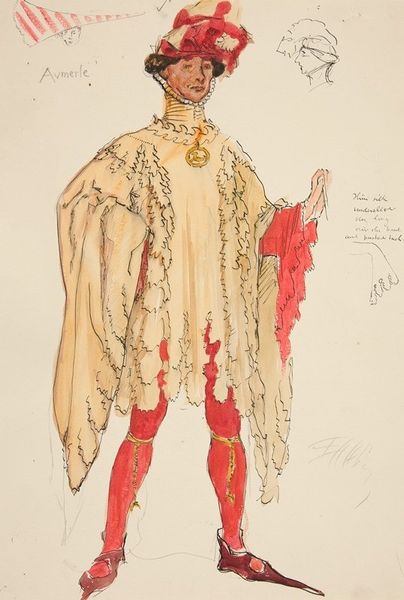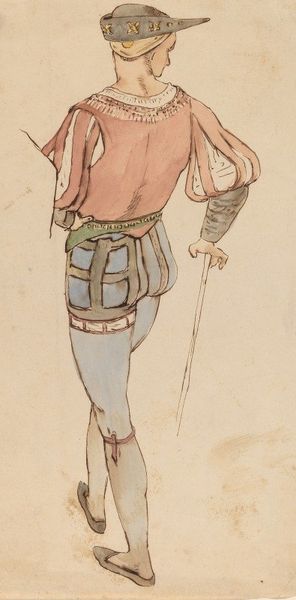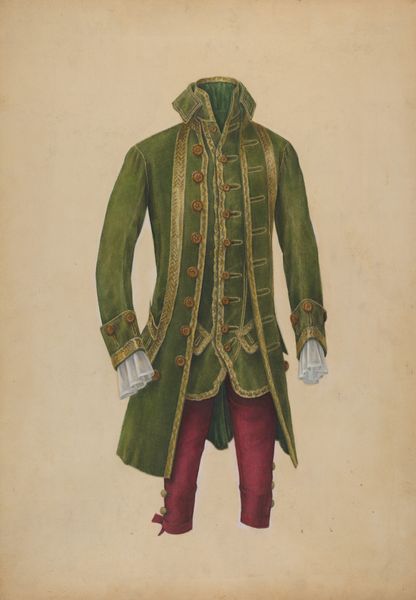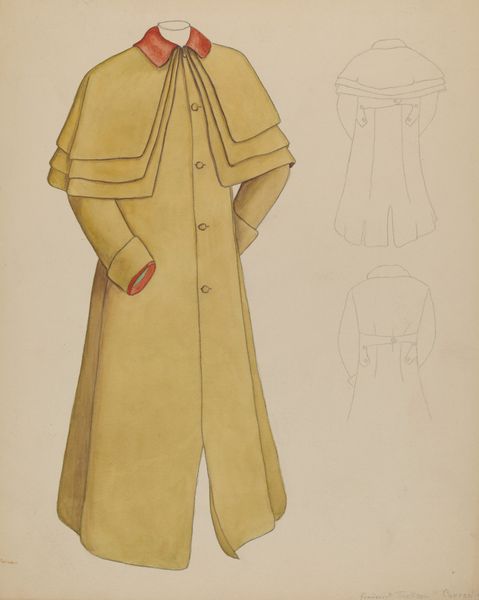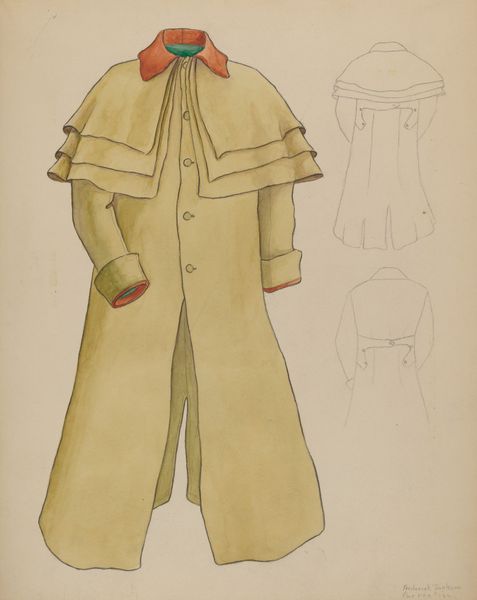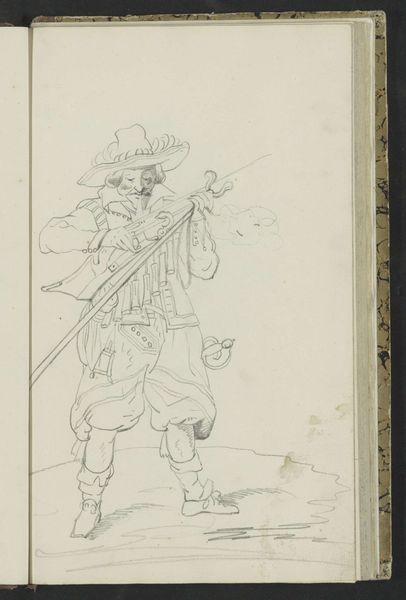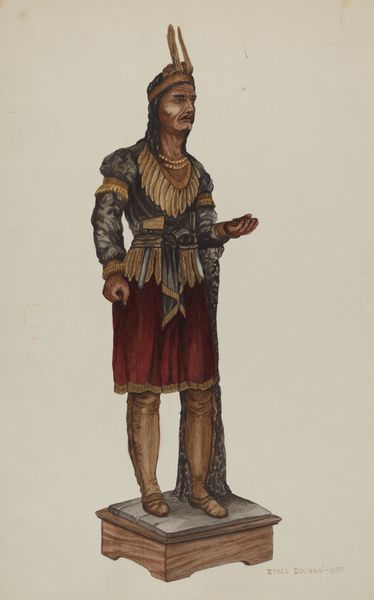
Keeper of Prison, costume sketch for Henry Irving’s 1898 Planned Production of Richard II
0:00
0:00
#
automotive illustration
#
light pencil work
#
pencil sketch
#
caricature
#
pencil drawing
#
animal drawing portrait
#
portrait drawing
#
watercolour illustration
#
watercolor
#
fine art portrait
Copyright: Public Domain: Artvee
Curator: Immediately, I’m drawn to the green of his overcoat – a vibrant slash of color against the monochrome of the rest of the sketch. There’s something theatrical about it. Editor: Exactly! What we're looking at is a costume design by Edwin Austin Abbey, titled "Keeper of Prison," a sketch created for Henry Irving's ambitious but ultimately unrealized 1898 production of Richard II. Curator: Unfulfilled projects are always fascinating. Costume design provides such insight into theatrical production; it’s essentially textile-based character building, using color, silhouette and surface to evoke emotion and story. You’ve got to wonder what raw materials he was considering and the impact on stage of textures, volume and weight. Editor: The history of Irving’s productions is interesting in itself. He aimed for historical accuracy, and his elaborate staging was incredibly influential, setting a new standard for spectacle. It speaks to the broader Victorian interest in the medieval past, and the construction of English national identity. Think about the political function of such revivals and what narratives were promoted through them. Curator: And what was rejected? There is real materiality to consider here with what’s absent in costume sketches such as textiles, notions, and the techniques needed to hold things together and support them. One can almost see the exploitation that goes into making that level of production even with a cursory glance, don't you think? Editor: Absolutely. Costume sketches also functioned as promotional material, circulating within elite circles and influencing popular perceptions. But they were also used by textile factories, workshops and other trades that benefitted from a production like this, a constant, lucrative process of art, labor and dissemination. It created work, opportunity. Curator: Very true, although a lot of the actual laborers and producers that gave this production life are rarely if ever given the spotlight within social narratives surrounding Victorian culture. But despite that it gives new insight into seeing the costume through the context of the world that consumes its symbolism. Editor: A reminder that a garment on stage or page holds more than meets the eye. It represents the culmination of artistic vision and socio-political desires. Thank you for that materialist insight. Curator: Indeed, this glimpse behind the scenes allows us to imagine what might have been, while prompting critical thinking around those involved in its making and reception.
Comments
No comments
Be the first to comment and join the conversation on the ultimate creative platform.
